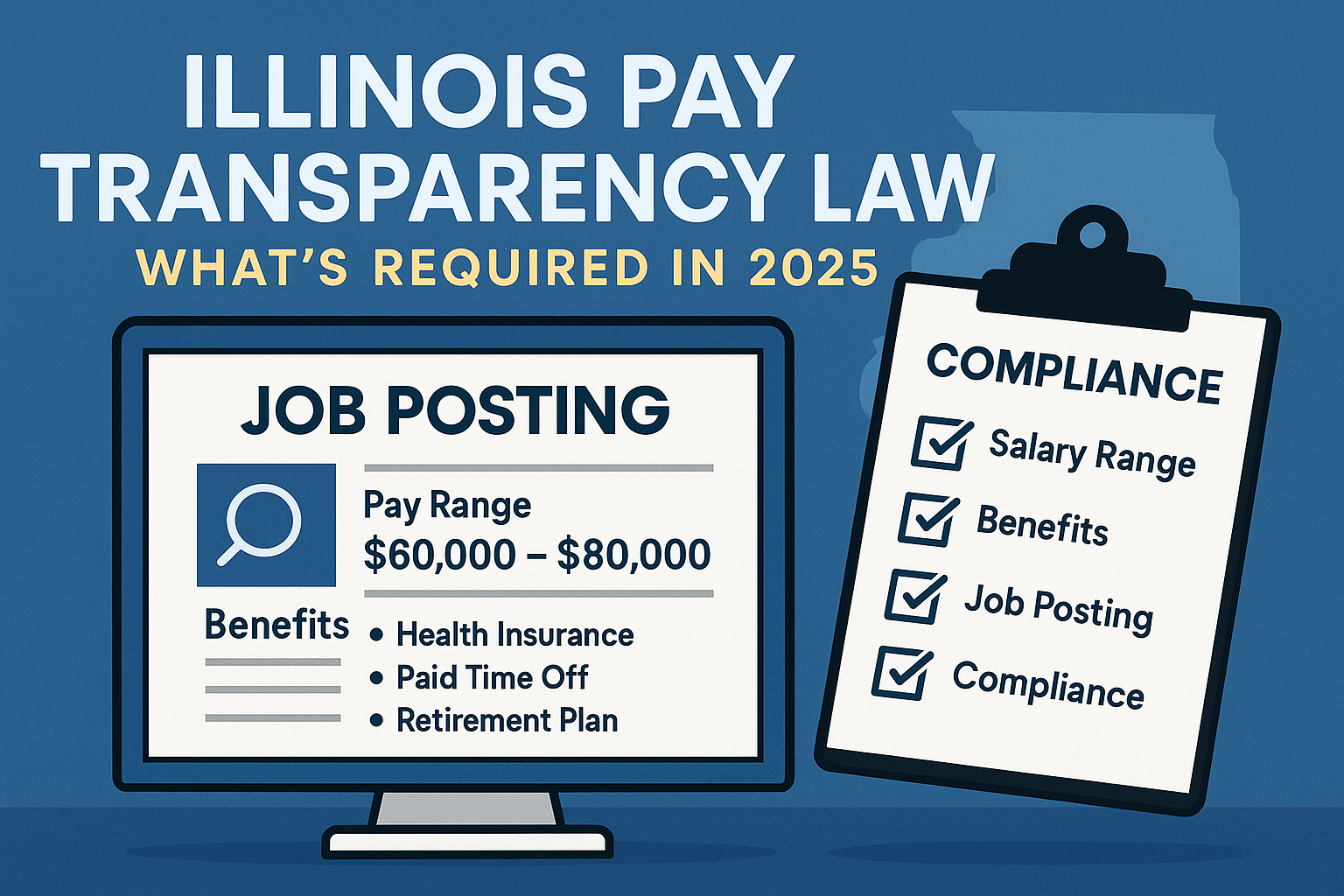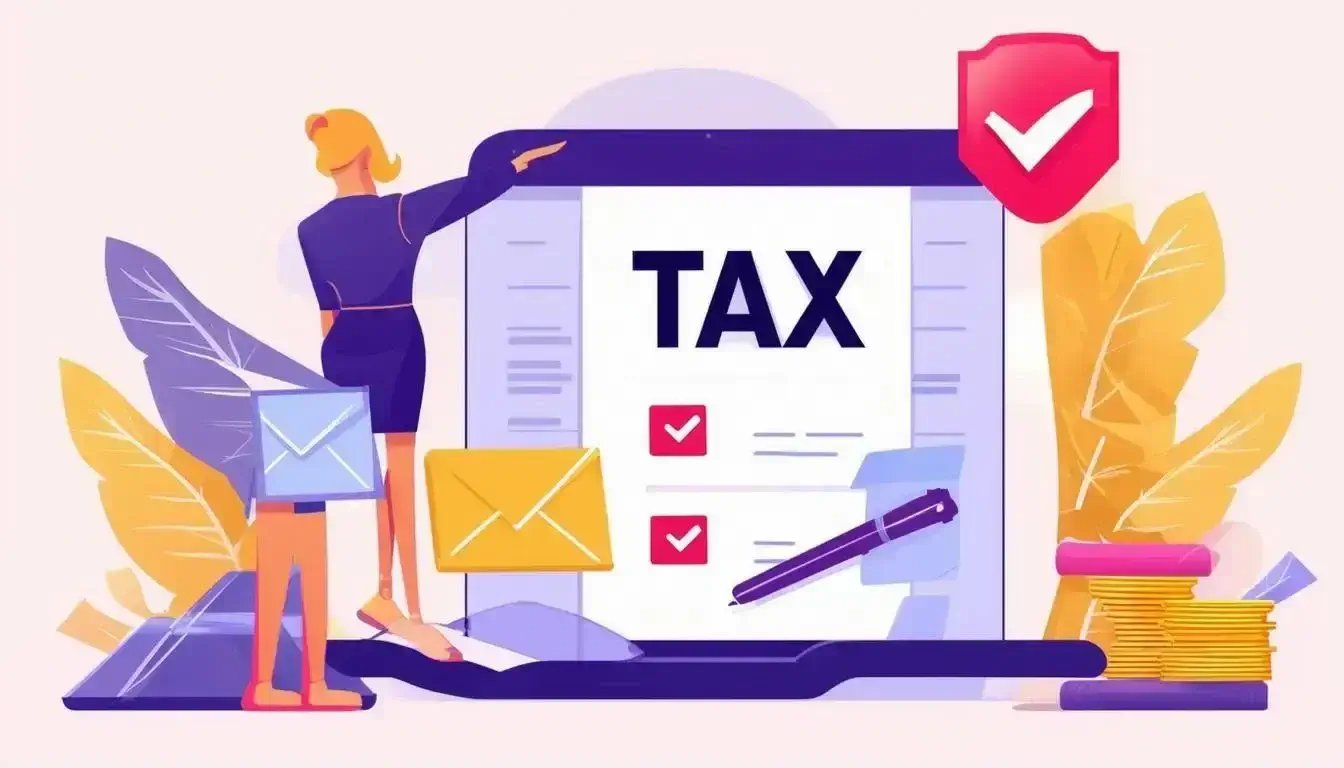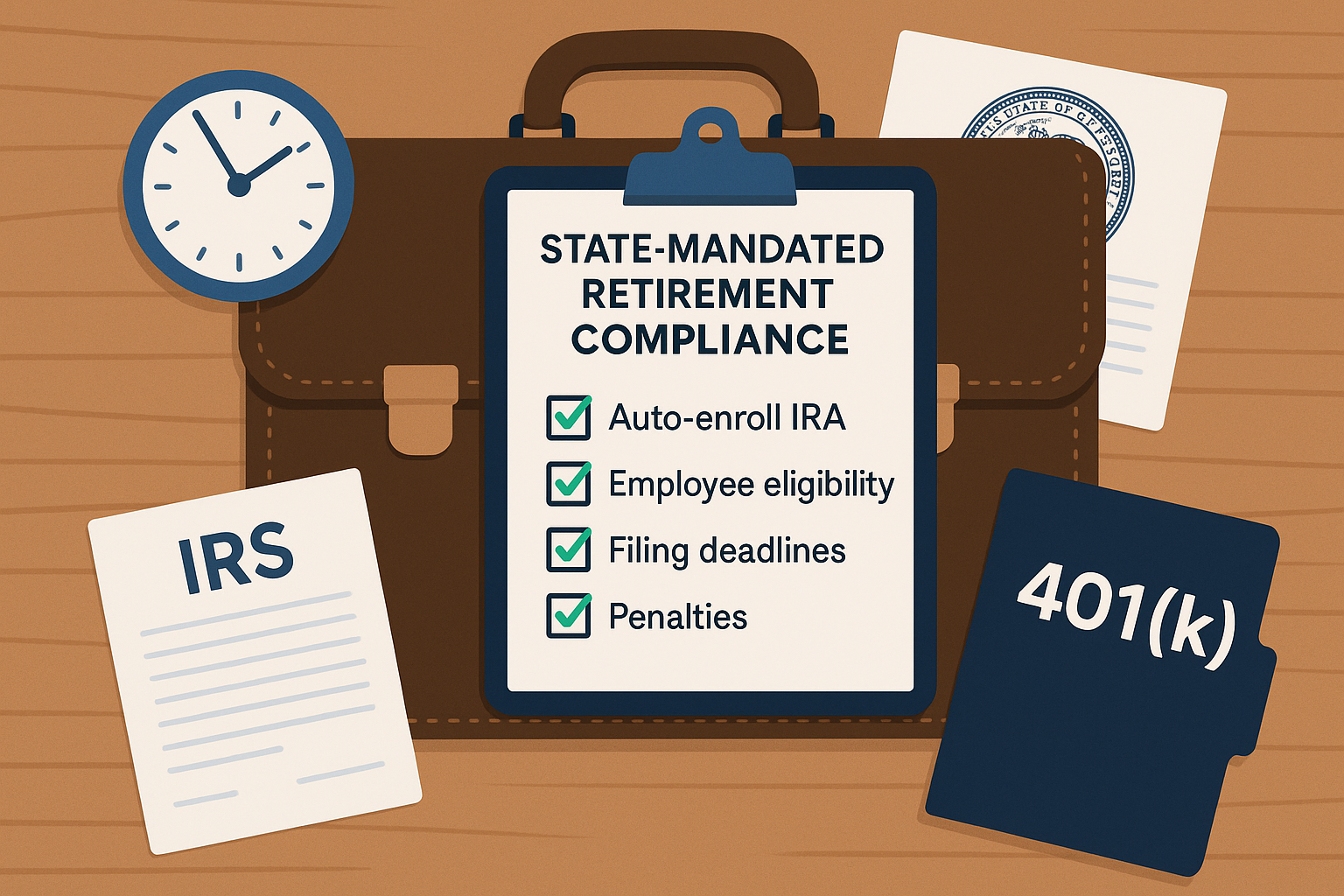Illinois Pay Transparency Law: 10 Key Takeaways Every Employer Needs to Know
April 30th, 2025
4 min read

If you're an employer in Illinois, you're likely already juggling hiring demands, wage pressures, and compliance challenges. Now, with a new pay transparency law that went into effect as of January 2025 by the Illinois Department of Labor (IDOL), the stakes have risen yet again. Navigating this regulation can feel overwhelming, especially without a dedicated legal team or modern HCM platform to back you up.
At Lift HCM, we work hand-in-hand with business owners and HR leaders to ensure compliance is never a roadblock to hiring great people. With years of experience guiding companies through legislative changes, we’ve broken down what you need to know—clearly and simply.
In this article, we’ll walk you through the 10 most important takeaways from the Illinois pay transparency law, so you can understand exactly what’s required, how it affects your business, and how to stay compliant without slowing down your hiring process.
Table of Contents
- What Is the Illinois Pay Transparency Law?
- 10 Key Takeaways for Employers
- Why This Law Matters for Hiring and Compliance
- Common Misunderstandings About the Law
- How to Prepare for Compliance Now
- Stay Ahead with Proactive Compliance
What Is the Illinois Pay Transparency Law?
Effective January 1, 2025, the Illinois Pay Transparency law requires employers with 15 or more employees to disclose pay scale and benefits information in job postings for positions that will be performed, even partially, in Illinois—or report to an Illinois-based location.
Illinois is part of a broader national trend pushing for transparency in compensation—and businesses must adapt quickly. Below are 10 key takeaways every employer should know about.
The bubble chart below maps industries based on their job posting volume and current pay gaps, with bubble size representing workforce size in Illinois. Healthcare, technology, and finance emerge as the most significantly impacted sectors due to their high job posting volumes, existing pay disparities, and large employee bases in Illinois.
10 Key Takeaways for Employers
1. Clarification on the Pay Scale Requirement
Employers must disclose a pay scale in postings, which can be based on:
-
Internal pay scales
-
Previously determined pay ranges
-
Actual pay of employees in equivalent roles
-
Budgeted amount for the position
The range should reflect what would be paid in Illinois, not in other states. If compensation varies by locality, employers should provide a range that allows applicants to estimate their likely pay. Tips, commissions, and bonuses should be disclosed if applicable, but no specific estimate is required.
The range must reflect good-faith expectations based on operational and financial considerations.
2. Explanation of the Benefits Requirement
Employers must include a general description of benefits and other compensation, such as stock options or bonuses. This can be satisfied by linking to a public, accessible summary on the company’s website.
The benefits description must clearly convey the nature of the offerings, even if general.
3. The 15-Employee Threshold Is Not State-Restricted
The law applies to employers with 15 or more employees, regardless of whether they are full-time or part-time, and whether they are located in Illinois or elsewhere.
If you have 15+ employees anywhere, you’re covered.
4. Applies to Internal and External Postings
Any specific job posting—whether for a full-time, part-time, temporary, or union job—must include pay and benefits details. Even internal company emails or physical postings in break rooms count.
The law doesn’t require job postings—but if you make one, it must be transparent.
Below is a pie chart breaking down the different types of job postings that must include pay transparency information.
5. Definition of a "Job Posting"
Not every job mention counts as a "posting." The law excludes general announcements like “we’re hiring” signs. A job posting refers to specific positions advertised with titles and qualifications.
Any targeted job opportunity notification triggers the compliance requirement.
6. Timing for Internal Promotion Notifications
If a position is posted externally and is eligible for internal promotion, employers must inform current employees within 14 calendar days.
Timely communication of promotion opportunities is mandatory under the law.
7. Remote and Out-of-State Roles Are Covered
Jobs physically performed in Illinois—or reporting to an Illinois-based manager or office—are included. Occasional or incidental contact with Illinois doesn’t trigger the requirement.
Employers must reasonably foresee the Illinois connection at the time of posting.
8. Responsibilities When Using External Job Boards
If a third party (recruiter, job board, etc.) posts your job, you must provide them with the pay and benefits information, or a link to it. They must include it in the listing.
You remain responsible for third-party compliance.
9. Recordkeeping Expectations
Employers must retain documentation that supports:
-
What pay/benefit details were provided
-
When and how postings were made
-
Internal communication of promotional opportunities
-
How pay ranges were established in good faith
-
Reasons for any differences in final compensation from the posted range
Comprehensive recordkeeping is critical to defend against audits and complaints.
10. Enforcement, Penalties, and PERM Implications
IDOL may investigate based on complaints or on its own initiative. For active postings, employers receive a notice and a cure period. Inactive postings can still lead to penalties.
Employers seeking PERM (Program Electronic Review Management) labor certifications must follow Illinois transparency laws, just like in other regulated states.
This stacked bar chart breaks down the potential financial impact of non-compliance, including investigation costs, civil penalties, and legal fees. The chart clearly shows how costs escalate with repeated violations, emphasizing the financial incentive for early compliance with the law rather than facing increasing penalties over time.
Why This Law Matters for Hiring and Compliance
Pay transparency enhances fairness and can improve recruitment outcomes. For HR and compliance teams, this law means more proactive documentation, training, and coordination with legal and recruiting stakeholders.
Transparency helps employers build trust while complying with a shifting legal landscape.
Below is a heatmap displaying the projected impact of pay transparency on various HR metrics across different company sizes.
Common Misunderstandings About the Law
-
"It’s just for job boards" – Wrong. It applies to emails, the intranet, and physical notices.
-
"Remote jobs are exempt" – They’re not, if they tie back to Illinois operations.
-
"Benefits don’t need to be detailed" – A general but informative description is required.
Understanding what doesn’t count as compliance is just as critical.
How to Prepare for Compliance Now
Here’s what employers should do:
-
Review and update job posting templates
-
Standardize internal pay bands
-
Ensure a central location for benefits info
-
Train HR and recruiting teams
-
Establish recordkeeping protocols
-
Use a platform (like isolved People Cloud™-the one we use at Lift HCM) to manage pay data and compliance workflows
Compliance is smoother when integrated into daily hiring operations.
Stay Ahead with Proactive Compliance
In the past, hiring teams operated with vague salary disclosures and minimal structure, which left candidates—and sometimes internal staff—without clarity or fairness.
Today, with the Illinois pay transparency law fully in effect, compliance is no longer a "nice to have." It’s a legal obligation that requires alignment across HR, legal, and recruitment teams.
Looking ahead, companies that embrace transparency and invest in scalable systems—like the ones we provide at Lift HCM—will be better positioned to attract top talent, build trust with employees, and avoid costly penalties.
Don’t wait until there’s a violation. Use this opportunity to build a hiring process rooted in equity, clarity, and compliance.
Caitlin Kapolas is a results-driven professional with a strong background in account management and retail. She is dedicated to improving client experiences and building lasting relationships. Caitlin excels in identifying client needs, resolving issues, and implementing customized solutions that drive value. Her effective communication skills ensure high client satisfaction and loyalty, making her a trusted advisor and partner in meeting client needs with precision and professionalism.
Topics:
























